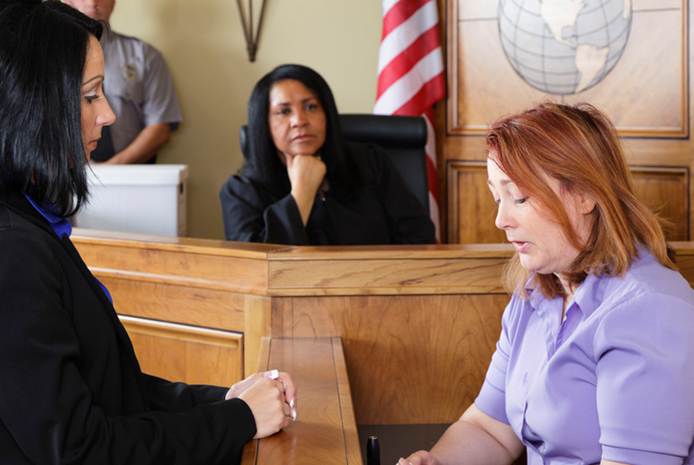
What to Expect From a Personal Injury Settlement Conference
Understanding Personal Injury Settlement Conferences, From Preparation To Outcomes
After an accident, most people feel extremely stressed out. Between medical bills, missed work, and endless paperwork, the legal process can feel like a second trauma. And when your case moves toward a settlement conference, things may feel even more uncertain. You might wonder, what happens in that room? Will you need to speak? What if the other side won’t budge?
Here’s the good news. You’re not alone. At Horn Wright, LLP, we’ve helped injured New Yorkers through every step of the settlement process. We’ll help you prepare, make sure your story is heard, and stand firm when it counts. With offices serving clients across New York State, our attorneys are ready to fight for your peace of mind and a resolution that makes sense for you.

Understand the Purpose of a Settlement Conference
A personal injury settlement conference gives both sides a chance to resolve the case without a trial. In New York State, this conference is typically court-mandated. Judges in counties like Kings (Brooklyn) or Erie (Buffalo) often require these meetings before setting a trial date.
These conferences aren’t designed to pressure you. They create space for both parties to evaluate the facts and explore resolution. The court provides a setting where either a judge or a neutral mediator helps structure the conversation and exchange of settlement offers.
There’s no jury, no testimony, and no need to relive your injury in front of strangers. It’s a discussion shaped by facts, numbers, and the law.
Know When a Conference Happens in the Case Timeline
Settlement conferences follow a consistent order in the New York personal injury case timeline. Typically, courts schedule them after both parties complete discovery, meaning they’ve exchanged medical records, depositions, and other key documents.
Timing depends on the court's schedule and the complexity of your case. In Queens County Civil Court, judges may set a settlement conference within 60 days after discovery closes. In Suffolk County, it may happen soon after a compliance conference.
Most cases in New York reach this stage between 12 and 18 months after the initial filing, depending on court volume and how quickly documents are shared.
Learn Who Must Attend the Settlement Conference
New York courts expect key decision-makers to attend the settlement conference. That means the people in the room must be able to authorize agreements, not just take notes.
In most cases, you can expect:
- You, the injured party
- Your personal injury lawyer
- A defense attorney, often representing the other party’s insurer
- An insurance representative with the authority to settle
- A judge or court-appointed mediator
Judges in the New York Supreme Court, especially in counties like Manhattan and Westchester, often make attendance by the insurance decision-maker a requirement. That increases the chances of meaningful progress.
Prepare With Your Attorney Before the Conference
Before you enter the courthouse or log into a virtual session, your attorney will spend time helping you get ready. Preparation is about making sure you understand the range of what’s possible and what your case is worth.
Preparation often includes:
- Reviewing your medical history and treatment costs
- Estimating lost income and future wage impact
- Evaluating non-economic damages like physical pain
- Discussing acceptable settlement ranges
- Reviewing what the defense may bring up during negotiation
Your attorney may also write a confidential brief, submitted only to the judge or mediator. This document outlines the facts of the case and includes the strongest points of your position. In New York courts, a well-prepared brief can influence how the mediator guides discussions.
Review the Settlement Brief and Supporting Documents
The settlement brief is more than background. It’s a key part of how the court understands your case. In a New York personal injury conference, this document provides a detailed but focused explanation of what happened, how it affected you, and why compensation is justified.
Contents typically include:
- A short summary of the incident
- Clear statements about liability and fault
- Medical reports, hospital records, and provider notes
- A breakdown of current and future financial losses
- Legal references to relevant New York statutes or precedents
Courts in Albany and Nassau County rely on these briefs to guide early settlement conversations. These documents are roadmaps. They help frame the conversation and move it forward.
Know What Happens During the Conference
Most New York settlement conferences follow a structured but informal format. You begin with a short session, often with everyone present. The mediator or judge explains the ground rules and may ask both sides if they’ve already discussed settlement informally.
From there, the parties usually split into private rooms. The mediator moves back and forth, delivering offers, counteroffers, and feedback.
There’s no cross-examination or public questioning. Instead, the tone is practical and often quiet. The goal is to find a number both sides can live with, not to declare winners or losers.
In Monroe County, mediators often use a caucus format, which keeps the dialogue focused and minimizes pressure.
Understand the Negotiation Dynamics
Personal injury settlement negotiations require flexibility and focus. They also require an experienced attorney who can think clearly under pressure. The back-and-forth often starts with a lower offer from the defense, followed by a strong counter from your legal team.
Good attorneys know how to:
- Respond firmly without overreacting
- Justify your claim with evidence
- Reframe issues when negotiations stall
- Offer fair ranges backed by medical documentation
In New York, legal teams are often negotiating with seasoned insurance representatives. These individuals know how to push limits. Your attorney needs to be just as seasoned to advocate effectively.
Expect Possible Outcomes From the Conference
Every settlement conference ends with one of three outcomes:
- A full agreement: You accept a settlement, and the case closes. Courts file this outcome as a resolution without trial.
- A partial agreement: You settle some claims, but others may still go forward. The court might schedule another conference or prepare the case for limited trial.
- No agreement: Both parties walk away unresolved, and the case heads toward trial. Further negotiations can still happen.
In Staten Island’s Richmond County Supreme Court, judges sometimes encourage additional sessions when negotiations are close. This can give both sides time to reconsider.
Recognize How New York Law Affects Settlements
New York law follows pure comparative negligence. This means if you’re partially at fault, your compensation gets reduced by your percentage of fault. So, if you’re found 10% responsible, you receive 90% of the total damages.
In a settlement setting, this concept shapes how both sides value the case. Your attorney will evaluate:
- All medical treatment and future care plans
- Loss of income and future earnings
- Daily pain or emotional distress
- Effects on your ability to live independently
These values aren’t pulled from a chart. They’re based on your actual experience and supported by real documentation. Your legal team uses these to show why the proposed number fits both the law and your personal circumstances.
Be Aware of Local Variations by County or Borough
Not all courts in New York handle settlement conferences the same way. Differences across boroughs and counties can affect pace, tone, and structure.
For example:
- In Bronx Supreme Court, cases often face heavy dockets. Judges tend to push for resolution to keep trials moving.
- In Queens, court-appointed mediators may manage several cases in a day and rely heavily on the written briefs to guide them.
Knowing your local court’s expectations can influence your strategy. Attorneys who regularly practice in your specific county know these subtleties. That familiarity allows them to adjust on the fly and maximize negotiation results.
Trust the Process, Stay Prepared, and Let Experience Guide You
A settlement conference might feel like another hurdle, but it’s often the turning point. If you’re informed, prepared, and supported by experienced attorneys, you can walk in with confidence. Horn Wright, LLP, represents clients across New York State in high-stakes negotiations. We’re here to help you protect your future, one decision at a time.

What Sets Us Apart From The Rest?
Horn Wright, LLP is here to help you get the results you need with a team you can trust.
-
Client-Focused ApproachWe’re a client-centered, results-oriented firm. When you work with us, you can have confidence we’ll put your best interests at the forefront of your case – it’s that simple.
-
Creative & Innovative Solutions
No two cases are the same, and neither are their solutions. Our attorneys provide creative points of view to yield exemplary results.
-
Experienced Attorneys
We have a team of trusted and respected attorneys to ensure your case is matched with the best attorney possible.
-
Driven By Justice
The core of our legal practice is our commitment to obtaining justice for those who have been wronged and need a powerful voice.

